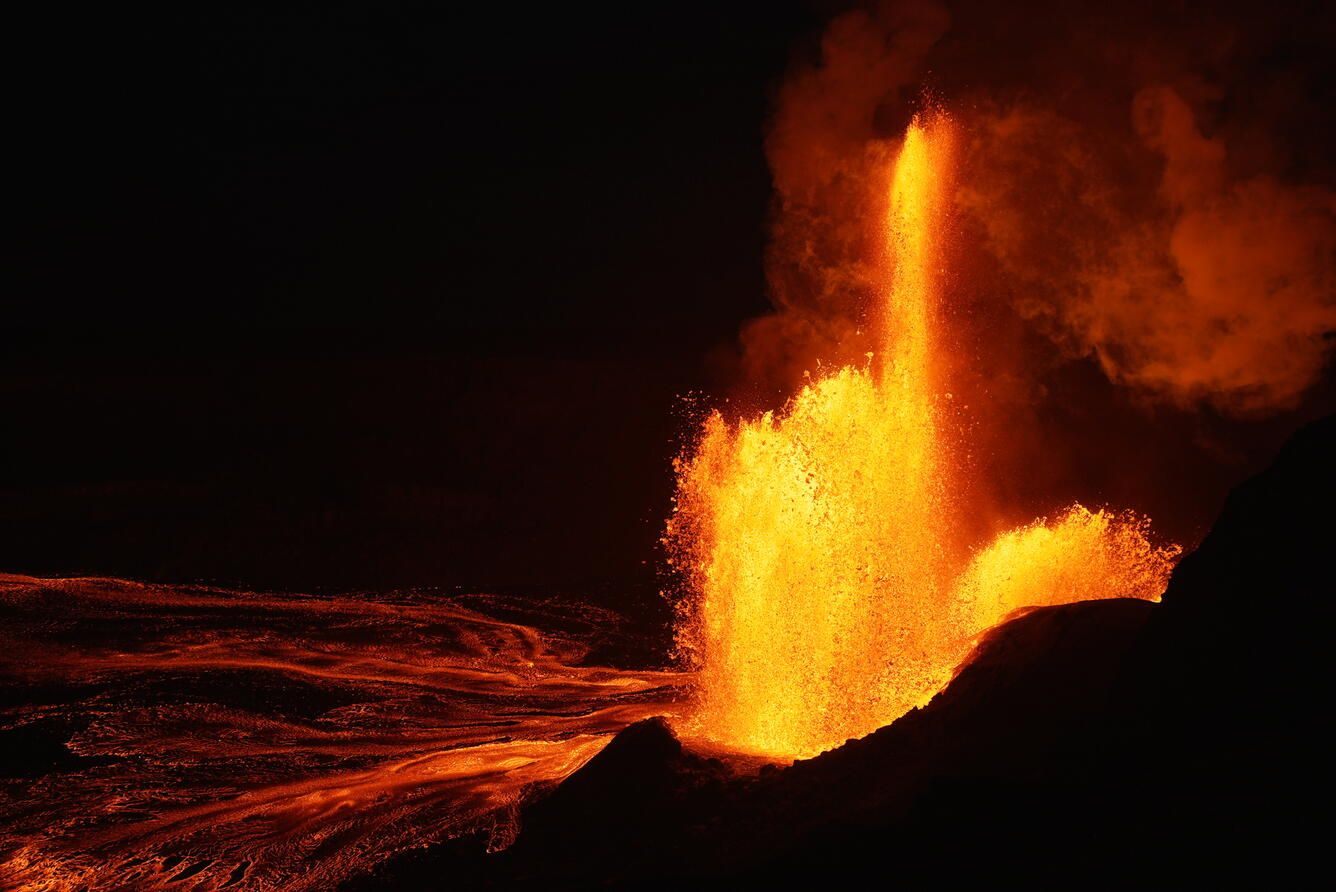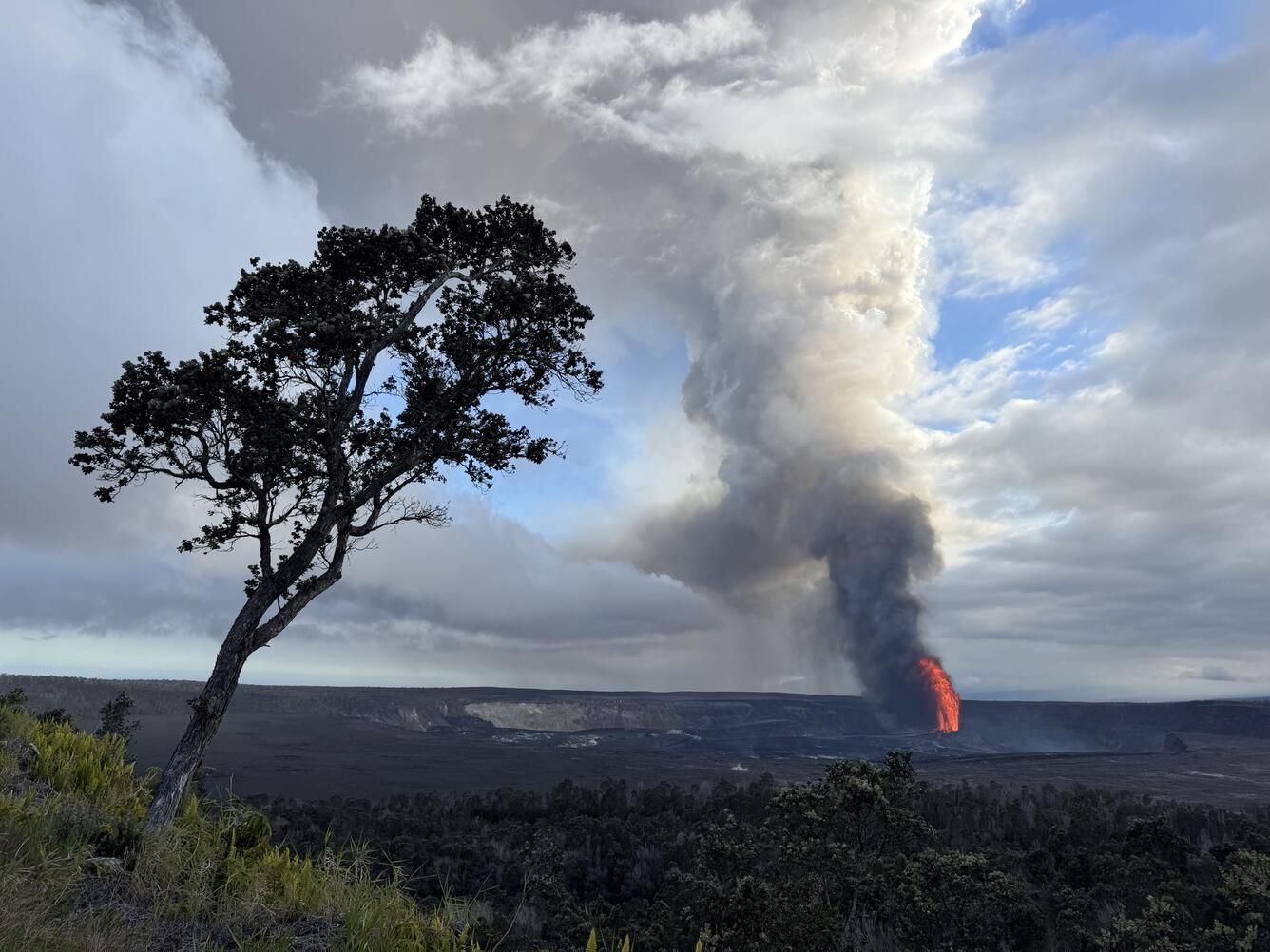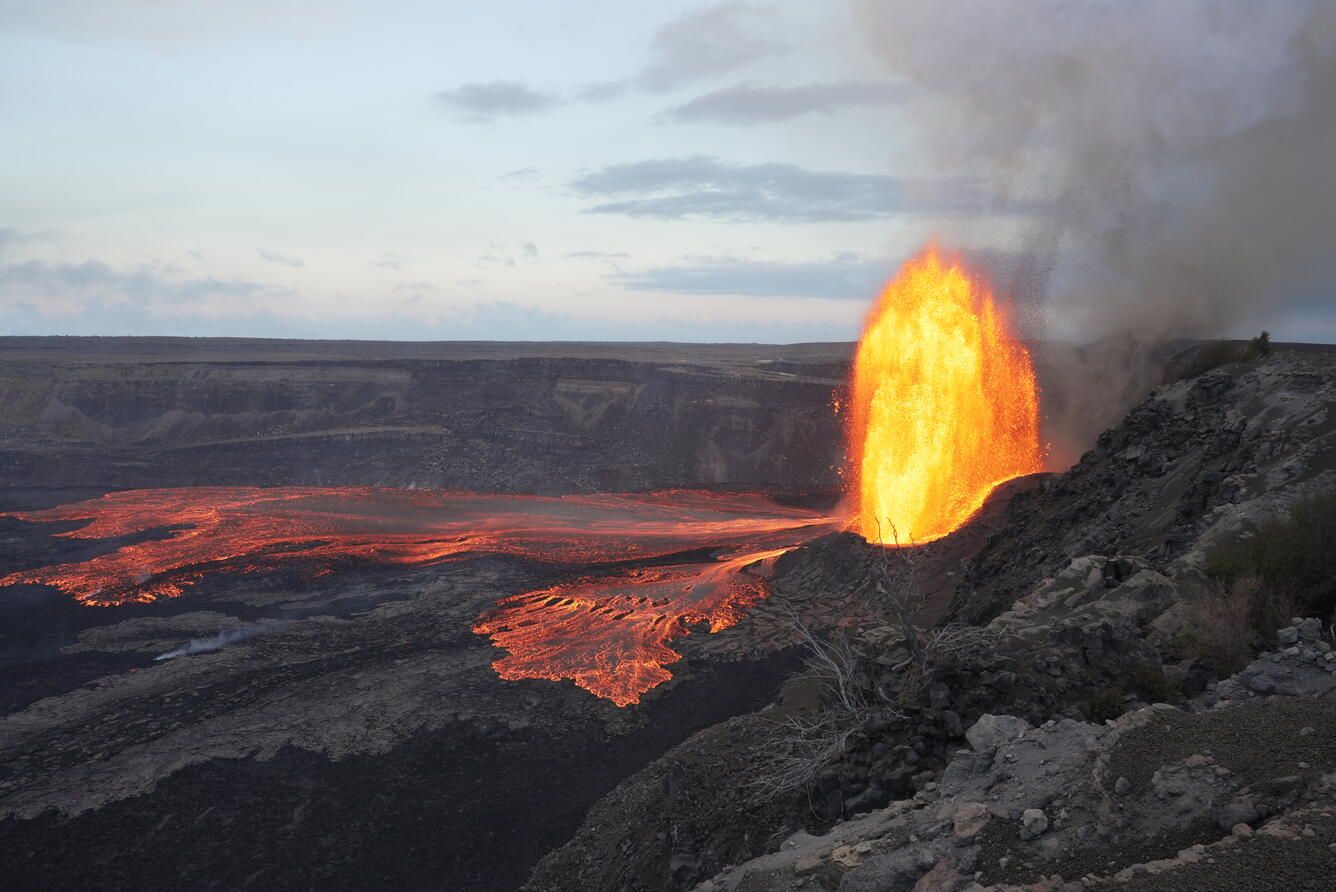Lava fountains as tall as the Eiffel Tower: eruption in Hawaii 🌋
Follow us on Google News (click on ☆)

The lava fountains observed last Sunday propelled materials over 1,000 feet (300 meters) into the sky, roughly the height of the Eiffel Tower in Paris. According to scientists' estimates, the volcano was also emitting up to 75,000 tons of toxic sulfur dioxide per day. These figures, published on the U.S. Geological Survey (USGS) website, highlight the scale of the eruption.
The current eruption in Halema'uma'u crater keeps magma close to the surface. This activity is part of an eruptive cycle that began in December 2024, marking the 23rd episode since its start. Scientists compare this phase to the historic Pu'u'ō'ō eruption, which lasted from 1983 to 2018.
Kilauea, one of the world's most active volcanoes, covers about 14% of Hawaii Island's surface area. Rising to 4,025 feet (1,227 meters) in elevation, its Halema'uma'u crater is considered the home of Pele, the Hawaiian goddess of fire. Although the eruption is contained within Hawaii Volcanoes National Park, its gas emissions extend far beyond these boundaries.

Volcanic gases, primarily water vapor, carbon dioxide, and sulfur dioxide, pose a major hazard. SO2 can form volcanic smog, or 'vog,' which is harmful to health. Authorities warn of respiratory risks and irritation to the eyes and skin, especially for exposed populations.
Among other dangers, Pele's hair—thin strands of volcanic glass—are particularly concerning. These formations, carried by wind, can cause skin and eye irritation. The USGS recommends avoiding contact with these particles and continuously monitors the volcano's activity via webcams.
Kilauea's eruption offers a stunning natural spectacle but also serves as a reminder of nature's destructive power. Scientists continue to closely monitor this activity, both to understand its mechanisms and to protect surrounding communities.

What is 'vog' and how does it affect health?
'Vog' is volcanic smog formed when sulfur dioxide emitted by a volcano reacts with oxygen and moisture in the air. This phenomenon is particularly common in Hawaii due to Kilauea's frequent activity.
Inhaling 'vog' can cause respiratory problems, especially for those with asthma or other lung conditions. Symptoms include coughing, throat irritation, and breathing difficulties.
Beyond the respiratory tract, 'vog' can also irritate the eyes and skin. Health authorities recommend staying indoors on days with high 'vog' concentrations, particularly for vulnerable groups.
Continuous monitoring of volcanic emissions helps predict 'vog' episodes and inform the public in real time. Protective measures, such as wearing masks, can reduce health risks.
Why is Pele's hair dangerous?
Pele's hair consists of volcanic glass filaments formed when gas bubbles in lava burst at the surface. These extremely fine and lightweight strands can be carried long distances by wind.
Their danger lies in their ability to penetrate skin and eyes, causing irritation and injuries. Their fragile structure makes them difficult to handle safely.
Beyond physical risks, Pele's hair can contaminate water supplies and crops. Their heavy presence after an eruption requires specific cleanup measures to protect local communities.
Scientists study these formations to better understand their dispersion and develop effective protection methods. Monitoring them is essential to minimize public health and environmental impacts.